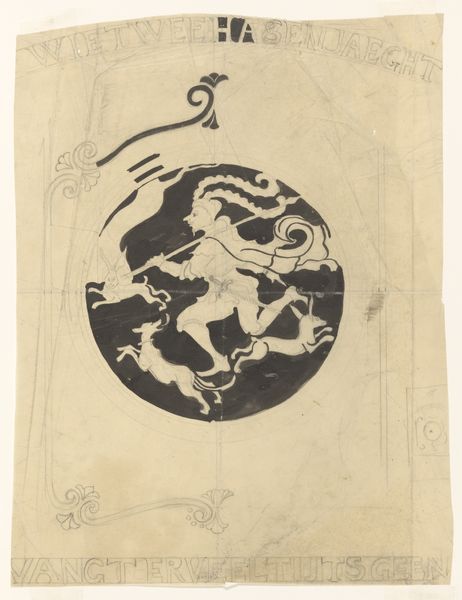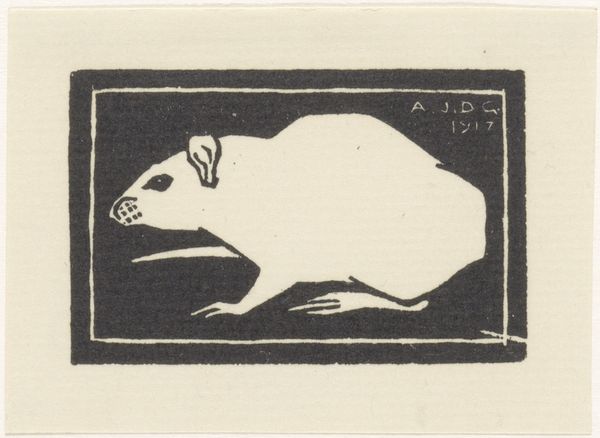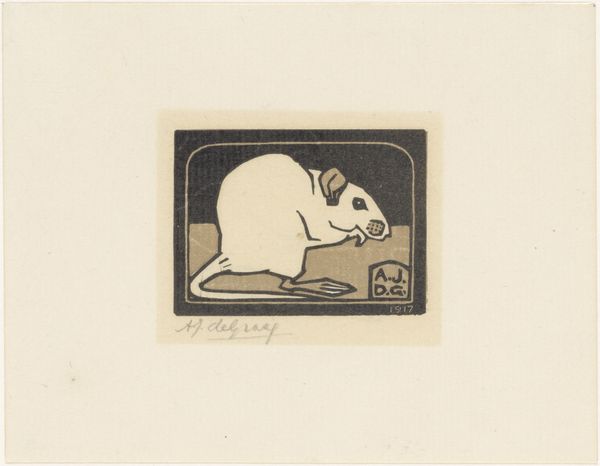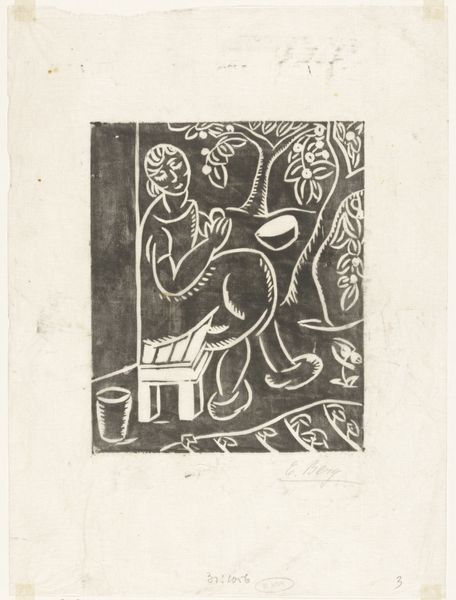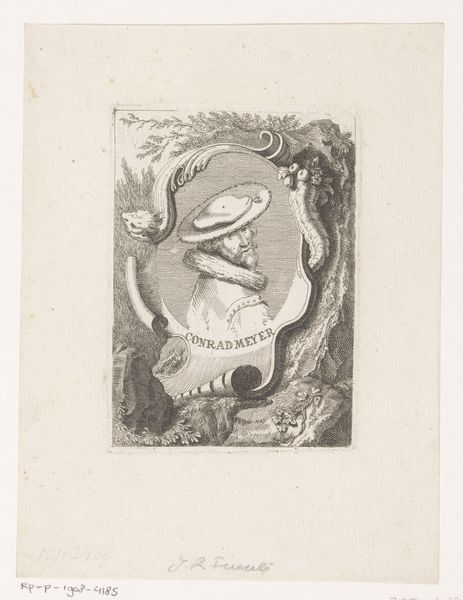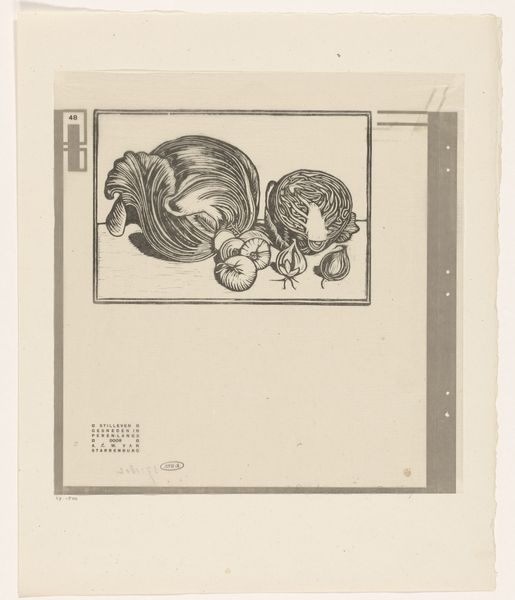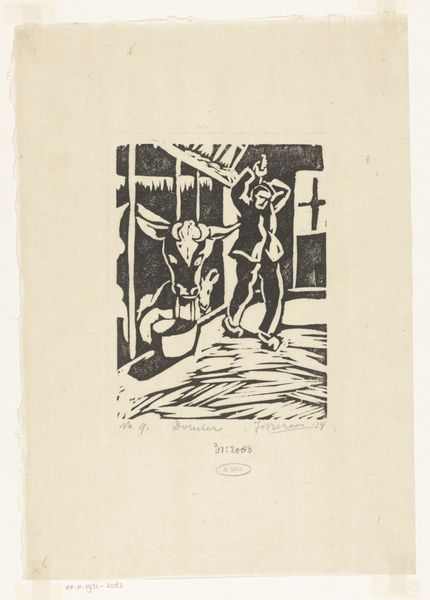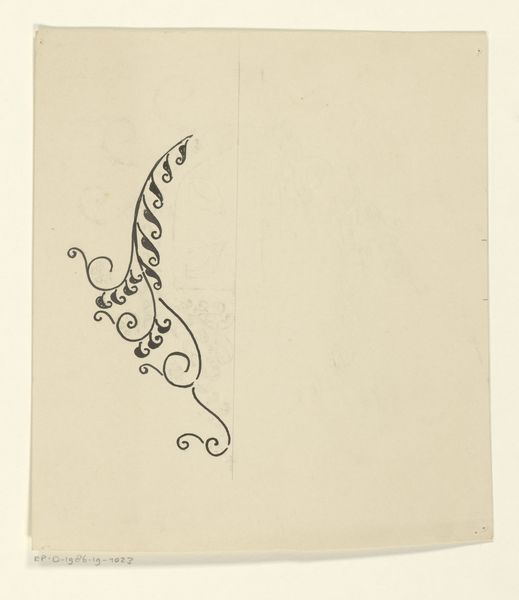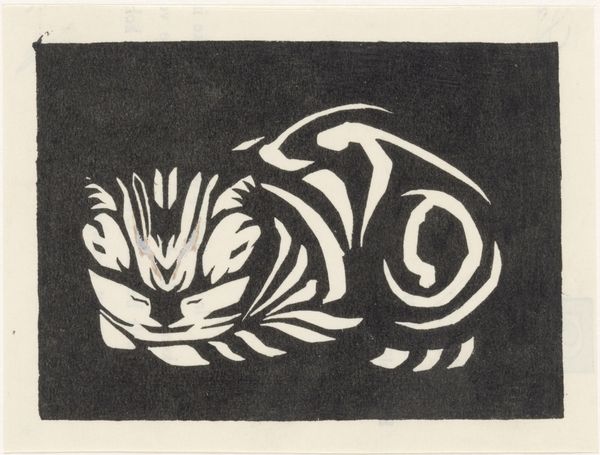
drawing, paper, ink
#
drawing
#
animal
#
figuration
#
paper
#
form
#
ink
#
line
#
symbolism
Dimensions: height 99 mm, width 66 mm
Copyright: Rijks Museum: Open Domain
Julie de Graag made this woodcut of a mouse biting its own tail in 1919. The palette is simple, just black and white, but that constraint gives it real power. De Graag's mark-making is confident, each line decisive, and together they create an image that’s at once playful and a bit unnerving. The crispness of the lines gives the mouse a graphic quality, almost like a logo. Look at the negative space, how the white of the mouse pops against the black circle, and how the tail loops around, creating a sense of endlessness or futility. It’s a simple gesture, this biting of the tail, but it speaks volumes about being trapped in cycles. It reminds me a bit of some of the symbolist artists, like Edvard Munch, who were also exploring themes of anxiety and the human condition, but with a touch more wit. Art is, after all, a conversation across time, artists responding to and riffing off each other’s ideas.
Comments
No comments
Be the first to comment and join the conversation on the ultimate creative platform.



